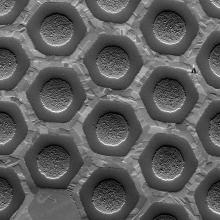Image

S. Martin
By combining complementary methods comprehensive knowledge about varying materials states is obtained. The analysis and interpretation of the samples requires the use of simulations/modelling to evaluate the experimental data thoroughly. A wide experience in the following methods and their development is available in the group:
- Generation of defined sample states in multi-component systems on a laboratory scale. Particularly in the case of alloys, it is useful to mimic the effects of alloying elements in complex technical alloys using model alloys based on pure substances,
- Alloys with desired, precise compositions in the electric arc furnace or as thin layers,
- Production of oxides through co-precipitation, calcination, and subsequent heat treatment
- Thermodynamic variables can be measured using calorimetric methods and thermodynamic modelling, specifically the CalPhaD method,
- Application of X-ray diffraction for phase identification, crystal structure determination but also for microstructure analysis; use of Rietveld refinement for modelling experimental diffractograms to determine quantitative structural parameters,
- Scanning electron microscopy analysis including energy-dispersive X-ray spectroscopy (EDS) and electron backscatter diffraction (EBSD), but also special imaging modes (ECCI).